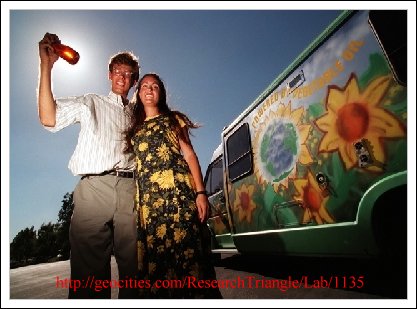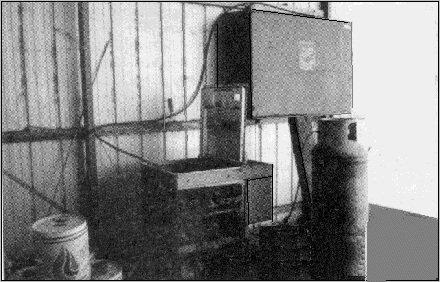

Backyard biodiesel
Michael Drinkwater
explains how he runs both his truck and backup generator on biodiesel
Two years ago my family and I relocated from Melbourne to our block in Gippsland. Having been quoted a totally unreasonable sum to connect to the power grid, we installed a RAPS system.
We rely heavily on the wind, using one AIR 403 wind turbine to charge our batteries. We have a very high average wind speed and find the performance of this machine to be excellent. It is the only source of battery charging we need, providing we get enough wind.
As most people on independent power realise, you can't rely on just one source, be it wind, solar, or to a lesser extent hydro, to deliver all the time. Most systems have a backup generator, as we do, and ours is powered by a diesel engine.
As we are horse breeders we also have a diesel truck to perform all our trans- port duties, from towing a float to going shopping.

Having read with much awe about the Tickells' veggie van ,
I just had to buy the book From the Fryer to the Fuel Tank and give it a whirl. It would be very beneficial to us if we could `do it' ourselves.
I have an employment background in process control instrumentation and also home appliance servicing, and so eventually settled on using a slightly modified dishwasher as a biodiesel reactor.

It seemed to be almost perfectly suited to this purpose as it had a high wattage heating element (2000 watt),powerful recirculating pump for mixing the reactants and, once it was tilted on the back of the cabinet, a capacity about the same as my truck and generator fuel tanks combined.
I used an old New World dishwasher from which I removed the following items: dish racks, spray arms, door springs, and insulation from the back of the cabinet, which allowed me to fit a gas burner ring to preheat the oil and keep the concoction warm after reaction while settling, as is necessary during cold weather.
The capacity of the cabinet is 200 litres in total, which produces around 160 to 170 litres of fuel. I also fitted a drain cock to the lowest point in the cabinet to drain the glycerine off after the reaction. The final product is then pumped to an overhead storage tank (a reused heating oil tank which holds 400 litres).
It took me a while to get started and source the ingredients at a reasonable cost, but now I meet my entire fuel demands with bio diesel. I have fitted my generator with a truck alternator to directly charge my batteries if necessary, making it very efficient.
I have found some types of cooking oil to give better results than others with animal-based oil being the best, but it is more challenging to process as it is more solid than vegetable oils, like cotton seed oil, which stays liquid at room temperature.
I do not find it necessary to perform a titration test with every batch of oil as the oil I get seems to be of fairly consistent pH, but I do need to purchase better scales, which are quite expensive.
As long as the reaction produces a clear separation of the glycerine and the biodiesel, it seems to perform well in both the generator and the truck. The only problem I now have is to find a use for the large quantity of glycerine soap I have accumulated.
I am truly in debt to the ATA and the Tickells for this information, which has changed forever the way our energy requirements are met both in power generation, transport and independence.
We eagerly await more good ideas to give our descendents a chance at life on Planet earth. I might even give the methane digester a whirl.
You may also be interested in these following webpages as well
Going bush with renewables and bio cooking
This article and pictures originally appeared in The Renew magazine April June 2000
